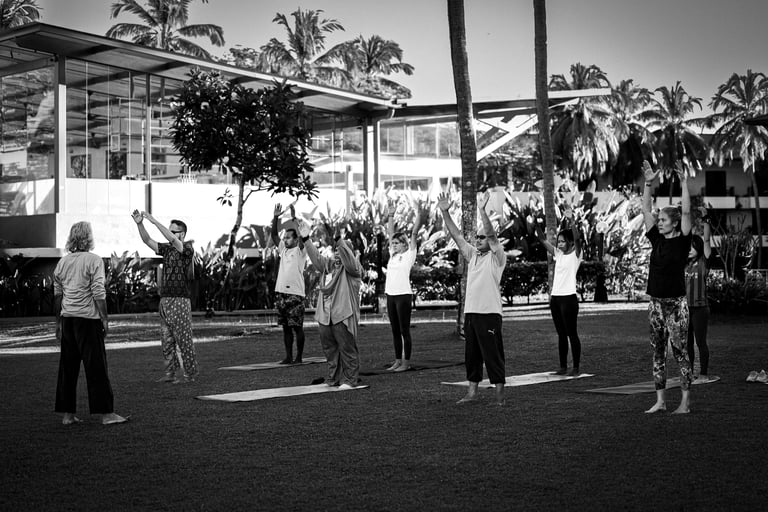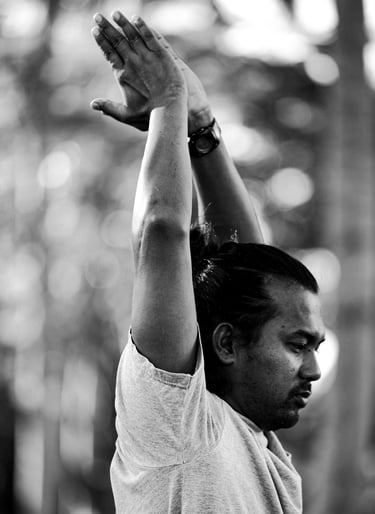The Importance of Breath : The Life-force


Breathing is essential for obtaining the oxygen we need from the environment and expelling carbon dioxide, a waste product of cellular respiration. Every cell in our body relies on oxygen for proper functioning, as it serves as a crucial component in the process of generating energy through cellular respiration, along with glucose.
Typically, breathing occurs automatically, regulated subconsciously by the respiratory center located at the base of the brain. It continues even during sleep and unconsciousness, ensuring our survival without our conscious awareness.
What sets breathing apart from other visceral functions, such as heart rate, digestion, arousal, coughing, and sneezing, is its unique ability to be voluntarily controlled. We can consciously regulate our breath, whether when speaking, singing, playing wind instruments, swimming underwater, or blowing warm air onto cold hands.
Voluntary control of breathing differs from automatic breathing in that the latter requires no conscious attention to maintain, while the former demands a certain level of focus
Breath and Physical Activity
We all know that physical activity and breathing go hand in hand. When walk , we take deep, rhythmic breaths. When we sit down to relax, our breath becomes calm and steady. It's a seamless partnership that we've experienced countless times. Even everyday actions like climbing stairs, laughing, or playing sports are accompanied by variations in our breathing patterns. It's as if our breath adapts to the demands of our activities, serving as the perfect sidekick.
Breath and Emotions
But what's truly fascinating is how our breath responds to our emotions. In moments of fear or excitement, our breath quickens, almost as if it's trying to match the rhythm of our racing heart. Think about the way our breath catches in our throats when you're nervous or how it deepens when we're completely engrossed in a thrilling movie. Breathing can be fraught with emotion, often beyond our conscious control. It demonstrates the close connection between our physical and emotional worlds.
Modes of Breathing
There are two modes of breathing: involuntary and voluntary. Involuntary breathing ensures that we continue to breathe even when we're fast asleep. It's essential for sustaining life and includes metabolic functions that keep working, whether we're awake or not.
On the other hand, voluntary control of breathing allows us to take charge. While the basic impulse for breathing comes from the brain stem, signals from the cerebral cortex can influence our breath. This means that you can consciously initiate, stop, or modify our breathing, opening up a world of possibilities. This helps us to swim underwater, blow warm air onto cold hands, talk or sing.
With practice, we can even replace unproductive breathing habits (e.g. mouth breathing, chest breathing) with more productive ones. It's a reminder of the incredible adaptability of our bodies and how we can actively shape our well-being.
Emotion and Behaviour
Let's not forget how our feelings and actions influence our breathing. When we're stressed, we might find ourselves taking shallow, rapid breaths. On the flip side, relaxation techniques often encourage slow, deep breathing to reduce stress and anxiety. It's a testament to how closely tied our behaviours are to the depth, speed, rhythm, and style of our breath.
So, the next time you find yourself short of breath during a tense moment or enjoying a calm, deep breath on a tranquil day, take a moment to appreciate the intricate relationship between our body and this vital life force.
Our breath is more than just a reflex; it's a mirror to our inner world and a tool for self-improvement. Our breath is the foundation for stress management.


Coordinating arm movements with the breath helps to make breathing deeper by stretching the muscles of the chest, back and abdomen.
Further Reading
The Importance of Sleep : Repair, Restore, Revitalise
Breath Stress & Sleep : Insights from Science
Kidney Health and Hydration : Staying Hydrated
